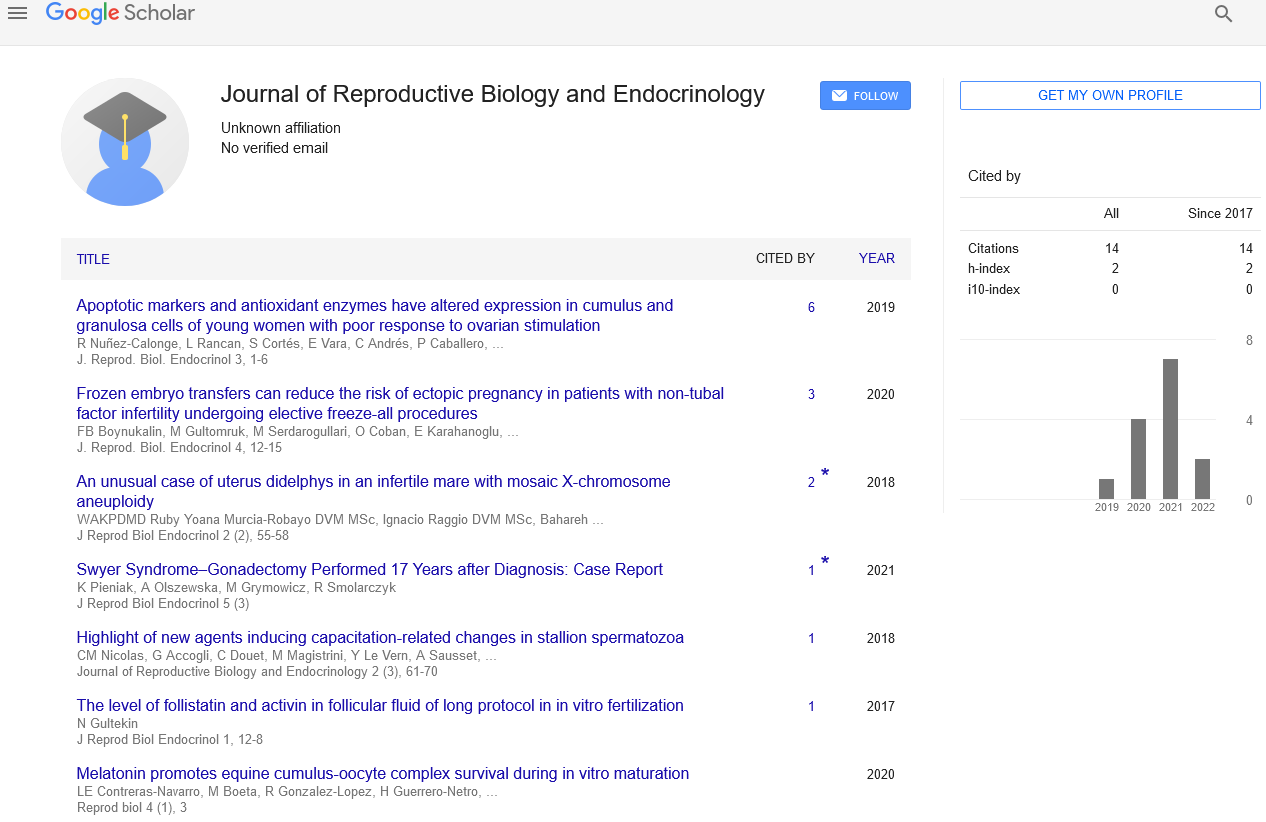Reproductive Disorder-Endometriosis
Received: 30-Oct-2020 Accepted Date: Nov 10, 2020; Published: 17-Nov-2020
Citation: Mounika K, Reproductive Disorder-Endometriosis, J Reprod Biol Endocrinol. 2020; 4(4):2.
This open-access article is distributed under the terms of the Creative Commons Attribution Non-Commercial License (CC BY-NC) (http://creativecommons.org/licenses/by-nc/4.0/), which permits reuse, distribution and reproduction of the article, provided that the original work is properly cited and the reuse is restricted to noncommercial purposes. For commercial reuse, contact reprints@pulsus.com
Endometriosis
Endometriosis is a regularly excruciating problem where tissue like the tissue that typically lines within your uterus-the endometrium- becomes outside your uterus. Endometriosis most usually includes your ovaries, fallopian tubes and the tissue covering your pelvis.
Symptoms: Dysmenorrhea; Pelvic pain
Dysmenorrhea
Dysmenorrhea is the clinical term for torment with period. There are two kinds of dysmenorrhea: “essential” and “optional”.
Essential dysmenorrhea is regular feminine issues that are repetitive (returned) and are not because of different infections. Agony ordinarily starts 1 or 2 days prior, or when feminine draining beginnings, and is felt in the lower midsection, back, or thighs. Torment can go from gentle to extreme, can normally last 12 to 72 hours, and can be joined by queasiness and-regurgitating, weakness, and even the runs. Regular feminine issues generally become less difficult as a lady ages and may stop completely if the lady has an infant.
Optional dysmenorrhea is torment that is brought about by a problem in the lady’s conceptive organs, for example, endometriosis, adenomyosis, uterine fibroids, or contamination. Torment from optional dysmenorrhea typically starts prior in the monthly cycle and keeps going longer than normal feminine spasms. The torment isn’t regularly joined by queasiness, spewing, weariness, or looseness of the bowels.
What causes dysmenorrhea (torment of feminine spasms)?
Feminine issues are brought about by compressions (fixing) in the uterus (which is a muscle) by a synthetic called prostaglandin. The uterus, where an infant develops, contracts all through a lady’s period. During monthly cycle, the uterus contracts all the more emphatically. On the off chance that the uterus contracts too emphatically, it can press against close by veins, removing the gracefully of oxygen to the muscle tissue of the uterus. Torment results when a piece of the muscle quickly loses its gracefully of oxygen.
Feminine agony from optional dysmenorrhea is brought about by an infection in the lady’s conceptive organs. Conditions that can cause optional dysmenorrhea include:
Endometriosis - A condition in which the tissue coating the uterus (the endometrium) is found outside of the uterus.
Adenomyosis – A condition where the coating of the uterus develops into the muscle of the uterus.
Pelvic provocative illness - A disease brought about by microorganisms that begins in the uterus and can spread to other conceptive organs.
Cervical stenosis - Narrowing of the opening to the uterus.
Fibroids (favorable tumors) - Growths on the inward mass of the uterus.
Pelvic Pain
Pelvic agony can have causes that aren’t because of fundamental illness. Models incorporate obstruction, pregnancy, full bladder, sexual torment, feminine cycle or injury.
Three kinds of endometriosis have been portrayed: peritoneal shallow endometriosis, ovarian endometriomas, and profound penetrating endometriosis (DIE). The last typically includes the uterosacral tendons, the rectovaginal space, the upper third of the back vaginal divider, the gut, and the urinary plot.
Peritoneal shallow endometriosis
Endometriosis may cursorily include the peritoneum (named shallow or peritoneal endometriosis, PE), it might profoundly penetrate the peritoneum and the stomach organs (invasion >5 mm, named profound invading endometriosis, DIE) or it might include the ovaries.





